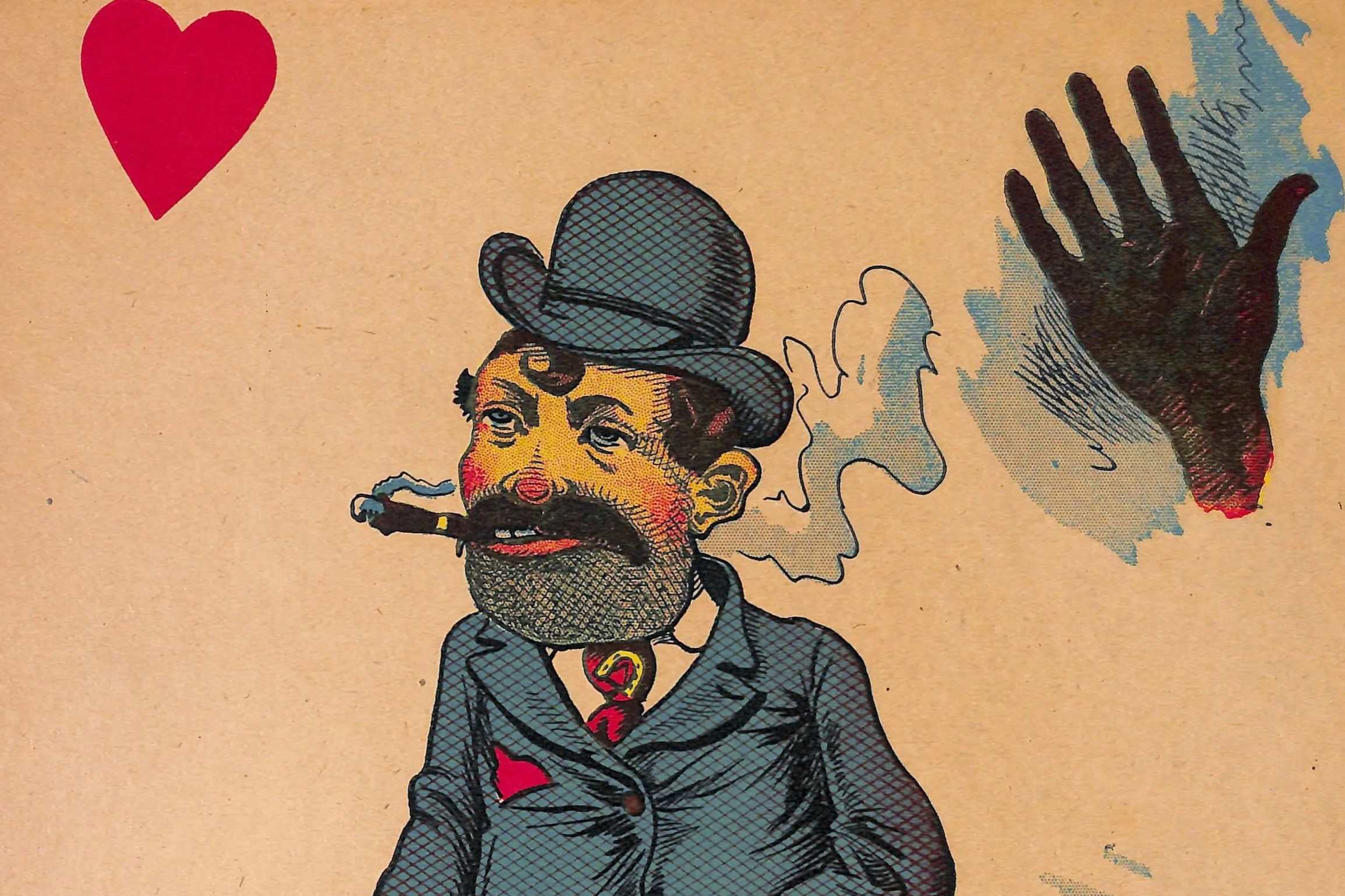
Ever heard of Vinegar Valentines? These cheeky, often rude cards were the 19th-century equivalent of a social media roast. Instead of spreading love, they delivered biting humor and sharp critiques. Vinegar Valentines were sent anonymously to those who needed a reality check or a playful jab. They covered everything from bad habits to poor fashion choices. Imagine getting a card that says, "Roses are red, violets are blue, your breath stinks, and your jokes do too!" These cards were the original "burns" before memes and tweets took over. Ready to dive into 35 quirky facts about these sassy pieces of history? Let's go!
Key Takeaways:
- Vinegar Valentines were insulting greeting cards popular in the 19th century, mocking appearance, behavior, and professions. They influenced society and inspired modern parodies, but eventually fell out of favor due to changing social norms.
- Despite their decline, Vinegar Valentines remain a fascinating part of cultural history, inspiring modern anti-Valentine's Day cards and serving as educational tools for learning about social history and communication evolution.
What Are Vinegar Valentines?
Vinegar Valentines were a unique and often harsh form of greeting cards popular in the 19th and early 20th centuries. Unlike the sweet and romantic messages we associate with Valentine's Day today, these cards were designed to insult or criticize the recipient.
-
Originated in the 1840s: Vinegar Valentines first appeared in the United States and the United Kingdom around the 1840s. They quickly gained popularity as a way to send not-so-nice messages.
-
Printed on cheap paper: These cards were usually printed on inexpensive paper, making them accessible to a wide audience. The low cost contributed to their widespread use.
-
Often anonymous: Many Vinegar Valentines were sent anonymously, allowing the sender to deliver their harsh message without revealing their identity.
-
Targeted various groups: These cards didn't discriminate; they targeted a wide range of people, including spinsters, bachelors, and even married couples.
-
Used for social commentary: Some Vinegar Valentines addressed social issues of the time, such as women's rights and temperance, often in a satirical manner.
Types of Messages
The messages on Vinegar Valentines varied widely, but they all had one thing in common: they were meant to sting. Here are some examples of the types of messages you might find.
-
Insults about appearance: Many cards mocked the recipient's looks, calling them ugly or unattractive.
-
Criticism of behavior: Some cards criticized the recipient's actions, such as being lazy or dishonest.
-
Mocking professions: Certain cards targeted specific professions, like doctors or lawyers, often portraying them as greedy or incompetent.
-
Relationship jabs: These cards could also take aim at someone's romantic life, suggesting they were unlovable or destined to remain single.
-
Humorous insults: Despite their harshness, some Vinegar Valentines used humor to soften the blow, making the insult more palatable.
Popularity and Distribution
Vinegar Valentines were incredibly popular during their heyday, and their distribution methods played a big role in their widespread use.
-
Sold in stores: These cards were commonly sold in general stores and stationery shops, making them easy to purchase.
-
Affordable pricing: Their low cost made them accessible to people from all walks of life, contributing to their popularity.
-
Mass-produced: Advances in printing technology allowed for mass production, ensuring a wide variety of designs and messages.
-
Postal service: The rise of the postal service made it easy to send these cards anonymously, adding to their appeal.
-
International reach: While they originated in the U.S. and U.K., Vinegar Valentines eventually spread to other countries, including Canada and Australia.
Cultural Impact
The cultural impact of Vinegar Valentines was significant, influencing various aspects of society and even inspiring other forms of media.
-
Satirical cartoons: The style and tone of Vinegar Valentines influenced satirical cartoons of the time, which often used similar humor and criticism.
-
Literature references: These cards were sometimes mentioned in literature, reflecting their role in society.
-
Public backlash: Not everyone appreciated Vinegar Valentines; some people found them offensive and campaigned against their use.
-
Inspired other holidays: The concept of sending humorous or critical cards extended to other holidays, like April Fool's Day.
-
Collectible items: Today, Vinegar Valentines are considered collectible items, with some fetching high prices at auctions.
Decline and Legacy
Despite their popularity, Vinegar Valentines eventually fell out of favor. However, their legacy lives on in various ways.
-
Decline in the early 20th century: By the early 1900s, the popularity of Vinegar Valentines began to wane, partly due to changing social norms.
-
Rise of romantic cards: As society's views on Valentine's Day shifted towards romance and affection, sweet and loving cards became more popular.
-
Historical interest: Historians and collectors have shown interest in Vinegar Valentines, preserving them as a part of cultural history.
-
Modern parodies: The concept of humorous or critical cards has persisted, with modern parodies often drawing inspiration from Vinegar Valentines.
-
Educational tools: Some educators use Vinegar Valentines to teach about social history and the evolution of communication.
Notable Examples
Certain Vinegar Valentines have become particularly famous or infamous, either for their content or their impact.
-
The Spinster Card: One well-known card mocked unmarried women, calling them old maids and suggesting they would never find a husband.
-
The Drunkard Card: Another card targeted men with drinking problems, depicting them as hopeless drunks.
-
The Gossip Card: This card criticized people who spread rumors, portraying them as nosy and untrustworthy.
-
The Gold Digger Card: Aimed at women perceived as marrying for money, this card depicted them as greedy and manipulative.
-
The Lazy Husband Card: This card mocked men who didn't work hard, portraying them as lazy and useless.
Fun Facts
Here are some additional fun facts about Vinegar Valentines that you might find interesting.
-
Different names: They were also known as "penny dreadfuls" due to their low cost and dreadful messages.
-
Variety of designs: The designs ranged from simple black-and-white sketches to colorful illustrations.
-
Gender-specific: Some cards were specifically designed for men or women, with tailored insults.
-
Postal regulations: At one point, the U.S. Postal Service considered banning these cards due to their offensive nature.
-
Modern equivalents: Today, you can find similar cards online, often marketed as "anti-Valentine's Day" cards.
The Last Word on Vinegar Valentines
Vinegar Valentines offer a fascinating glimpse into the past. These cards, often humorous and sometimes harsh, were a unique way for people to express their feelings. They weren't just about love; they covered a range of emotions, from disdain to humor. Their popularity in the 19th and early 20th centuries shows how people used humor and satire to communicate.
Understanding these cards helps us appreciate the complexities of human relationships and communication. They remind us that even in the past, people had creative ways to express themselves, sometimes with a sharp edge. Vinegar Valentines may not be as well-known today, but they remain an intriguing part of history.
So, next time you think of Valentine's Day, remember these quirky cards. They add a bit of spice to the sweet tradition of love and affection.
Frequently Asked Questions
Was this page helpful?
Our commitment to delivering trustworthy and engaging content is at the heart of what we do. Each fact on our site is contributed by real users like you, bringing a wealth of diverse insights and information. To ensure the highest standards of accuracy and reliability, our dedicated editors meticulously review each submission. This process guarantees that the facts we share are not only fascinating but also credible. Trust in our commitment to quality and authenticity as you explore and learn with us.


